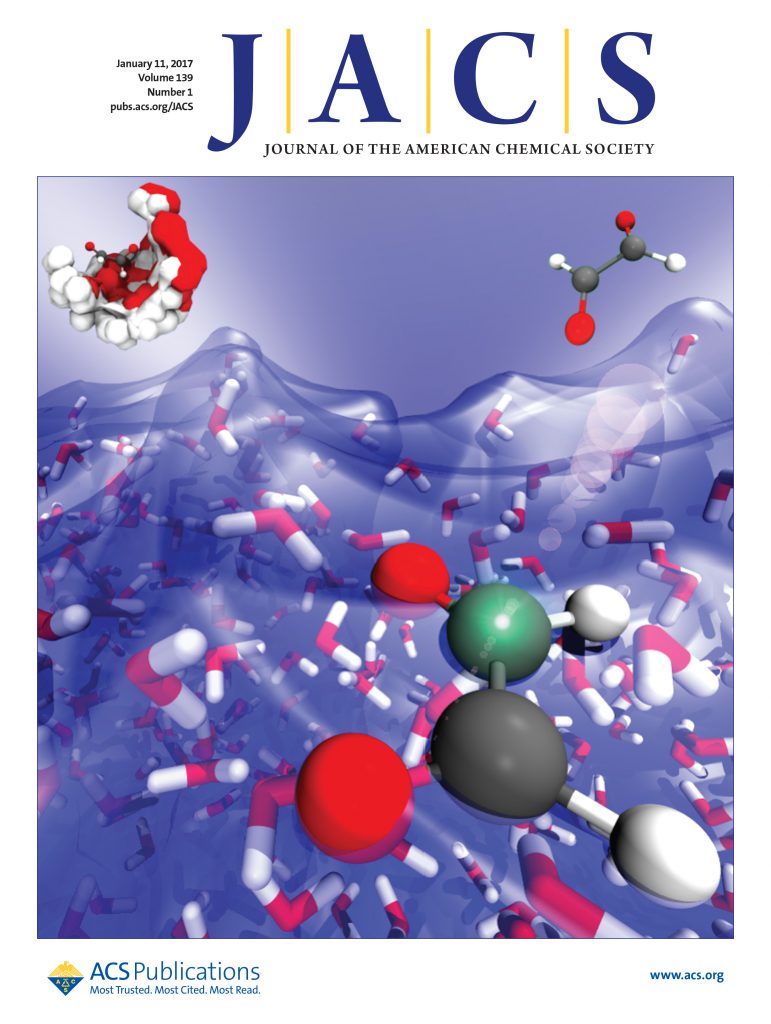Asymmetric C-C Coupling to Drive CO Conversion to Acetate.
IF 15.6
1区 化学
Q1 CHEMISTRY, MULTIDISCIPLINARY
引用次数: 0
Abstract
Electrochemical reduction of carbon monoxide (CORR) provides pathways for decarbonizing chemical manufacturing by producing high-value multicarbon (C2+) products, though achieving high activity and selectivity toward a single principal C2+ product remains challenging. Acetate, a critical liquid product, can be metabolized by bacteria to synthesize long-chain carbon compounds. Here, we design a core-shell Cu2O/Cu-2-methylimidazole (CuIM) catalyst with dual Cu sites (Cu+ and Cu0) during the CORR, which shifts the reaction pathway from symmetric *CO-*CO coupling to asymmetric *CH2-*CO coupling, thereby enhancing acetate formation. Ex situ X-ray diffraction spectroscopy (XRD) and in situ attenuated total reflection Fourier transform infrared (ATR-FTIR) analyses reveal that Cu+ remains stable and acts as an active site for generating *CH2 intermediates on the CuIM catalyst. The CuIM electrocatalyst achieves a Faradaic efficiency (FE) of 77.8% for acetate production from CO and a partial current density of 541.3 mA cm-2. These advancements enable high energy efficiency in membrane electrode assemblies and reduced downstream separation costs for liquid products in solid-state electrolyte systems.不对称C-C耦合驱动CO转化为乙酸。
电化学还原一氧化碳(CORR)为生产高价值的多碳(C2+)产品提供了脱碳途径,尽管实现对单一主要C2+产品的高活性和选择性仍然具有挑战性。醋酸盐是一种重要的液体产物,可被细菌代谢合成长链碳化合物。本研究设计了一种具有双Cu位(Cu+和Cu0)的Cu2O/Cu-2-甲基咪唑(CuIM)催化剂,将反应路径从对称的*CO-*CO偶联转变为不对称的*CH2-*CO偶联,从而促进了乙酸酯的形成。非原位x射线衍射(XRD)和原位衰减全反射傅立叶变换红外(ATR-FTIR)分析表明,Cu+在CuIM催化剂上保持稳定,并作为生成*CH2中间体的活性位点。CuIM电催化剂催化CO生成乙酸的法拉第效率(FE)为77.8%,分电流密度为541.3 mA cm-2。这些进步使膜电极组件具有高能效,并降低了固态电解质系统中液体产品的下游分离成本。
本文章由计算机程序翻译,如有差异,请以英文原文为准。
求助全文
约1分钟内获得全文
求助全文
来源期刊
CiteScore
24.40
自引率
6.00%
发文量
2398
审稿时长
1.6 months
期刊介绍:
The flagship journal of the American Chemical Society, known as the Journal of the American Chemical Society (JACS), has been a prestigious publication since its establishment in 1879. It holds a preeminent position in the field of chemistry and related interdisciplinary sciences. JACS is committed to disseminating cutting-edge research papers, covering a wide range of topics, and encompasses approximately 19,000 pages of Articles, Communications, and Perspectives annually. With a weekly publication frequency, JACS plays a vital role in advancing the field of chemistry by providing essential research.

 求助内容:
求助内容: 应助结果提醒方式:
应助结果提醒方式:


